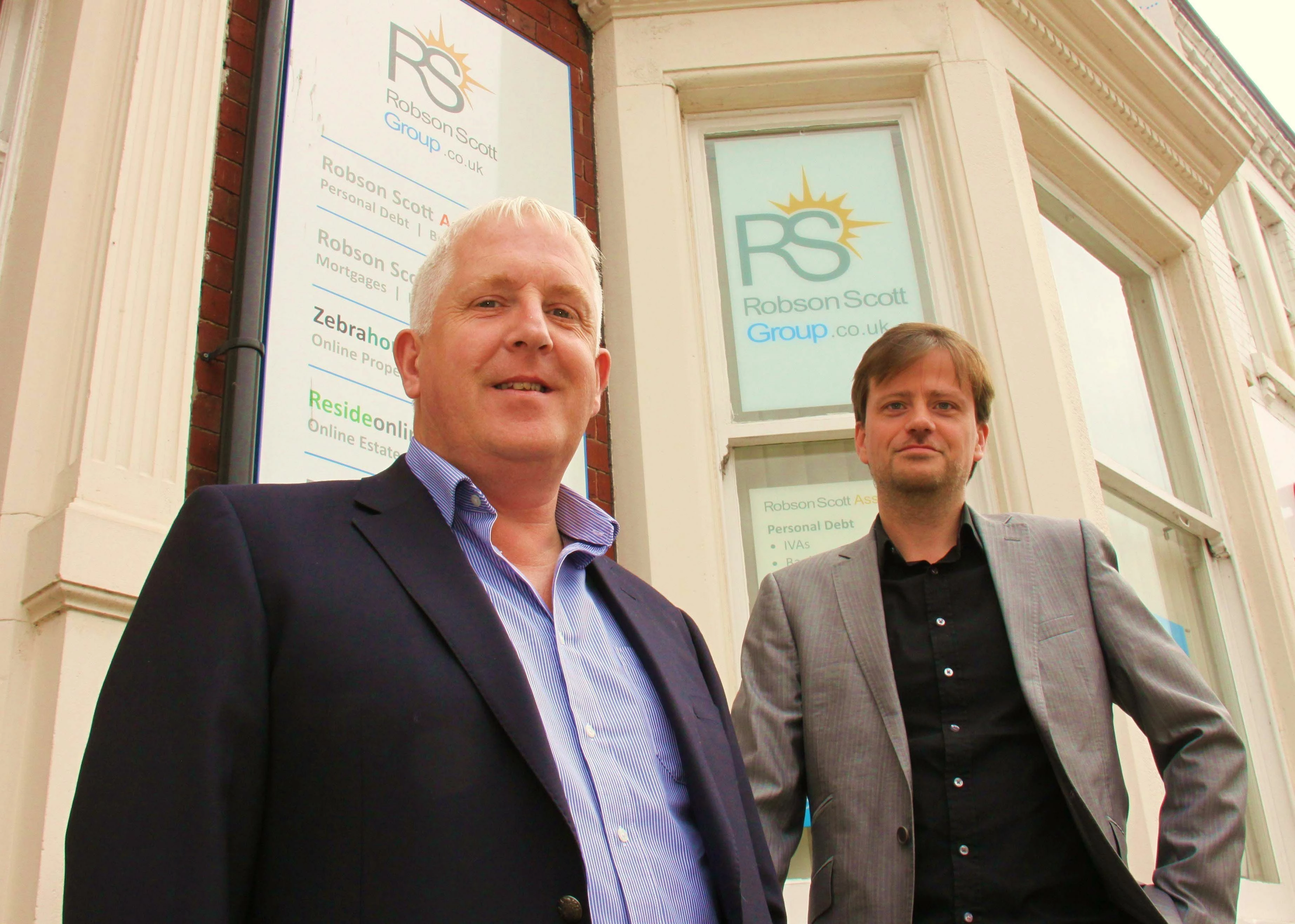
Partner Article
IVAs have ‘rocketed’ – new stats
People in the north east have suffered the highest rate of personal insolvency in the country in the last decade, with the north of the region faring worse than the south.
New figures released by the Insolvency Service covering the 10 years to the end of 2012 show that bankruptcies, Individual Voluntary Arrangements and Debt Relief Orders rocketed.
Nationwide, total rate of insolvencies leapt from 7.2 per 10,000 people in 2000 to 30.9 in 2009, an increase of 420%. Since then, it has fallen to 24.5 in 2012.
The north east has had the highest rate of personal insolvency in all its forms in England and Wales since 2009.
Last year the rate stood at 33.3, around 35 per cent higher than the rest of the country.
Eamonn Wall (pictured above right), managing director of Robson Scott Associates, an Insolvency Practice based in Darlington and Newcastle which specialises in both business assistance and personal insolvency, said: “It’s disappointing for the region that for such a protracted period of time we have had the highest rate of personal insolvencies across the country, and significantly higher than the average for England and Wales.
“Although we expect the overall rate of personal insolvencies to decrease in the North East, sadly we are likely to remain the worst hit region.”
The figures show that, in 2012, Gateshead had the highest rate of personal insolvency at 36.5 in every 10,000 people, followed by Sunderland and Northumberland (both 36.3).
The areas recording the fewest personal insolvencies were Stockton (21.1), Middlesbrough (25.5) and Redcar and Cleveland (27.6).
Darlington was 32.0, Newcastle 33.8 and Hartlepool 35.2.
In relation to the variable rate, Wall, whose company is the market leader in the North East for debt advice, including bankruptcy assistance and Individual Voluntary Arrangements, added: “People may be surprised by the variations of insolvency across the region.
“The figures show clear disparity between the north and south of the region, with the Teesside area having a rate of personal insolvency more akin to the national average, as opposed to Tyneside, Wearside and Northumberland having insolvency rates sometimes 40 per cent higher than the average.”
But Wall added that there were signs of an improving picture in the region.
“It’s not all doom and gloom,” he said.
“We are finding that confidence is tangibly lifting across the region’s business community, and the rate of growth within our economy is expected to increase over the next two years.”
This was posted in Bdaily's Members' News section by Martin Walker .
Enjoy the read? Get Bdaily delivered.
Sign up to receive our daily bulletin, sent to your inbox, for free.








 How to make your growth strategy deliver in 2026
How to make your growth strategy deliver in 2026
 Powering a new wave of regional screen indies
Powering a new wave of regional screen indies
 A new year and a new outlook for property scene
A new year and a new outlook for property scene
 Zero per cent - but maximum brand exposure
Zero per cent - but maximum brand exposure
 We don’t talk about money stress enough
We don’t talk about money stress enough
 A year of resilience, growth and collaboration
A year of resilience, growth and collaboration
 Apprenticeships: Lower standards risk safety
Apprenticeships: Lower standards risk safety
 Keeping it reel: Creating video in an authenticity era
Keeping it reel: Creating video in an authenticity era
 Budget: Creating a more vibrant market economy
Budget: Creating a more vibrant market economy
 Celebrating excellence and community support
Celebrating excellence and community support
 The value of nurturing homegrown innovation
The value of nurturing homegrown innovation
 A dynamic, fair and innovative economy
A dynamic, fair and innovative economy